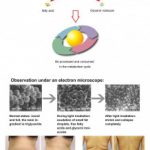Light therapy, often referred to as phototherapy, is a widely used treatment for a variety of skin conditions. It uses different types of light to treat skin problems like acne, psoriasis, and eczema. However, some people worry that light therapy might cause damage to their skin. In this article, we will explore this topic in detail and analyze whether light therapy can really harm the skin.
Contents
Understanding Light Therapy
Light therapy is a non-invasive treatment that uses specific wavelengths of light to treat a variety of conditions, including depression, sleep disorders, and skin conditions such as acne, psoriasis, and eczema. The therapy works by penetrating deep into the skin and stimulating the cells, promoting healing and rejuvenation.
There are several types of light therapy, including red light therapy, blue light therapy, and UV light therapy. Red light therapy is the most commonly used type of light therapy and is used to promote collagen production and reduce inflammation. Blue light therapy is used primarily to treat acne, while UV light therapy is used to treat skin conditions such as psoriasis and eczema.
The Safety of Light Therapy
While light therapy is generally considered safe, there are some potential risks and side effects. One of the most common concerns is whether or not light therapy can damage the skin.
The short answer is that it depends on the type of light therapy being used and the duration of the treatment. In general, red light therapy and blue light therapy are considered safe for the skin, while UV light therapy can be more damaging.
Red Light Therapy and Skin Damage
Red light therapy is considered safe for the skin and is often used to promote collagen production and reduce inflammation. However, prolonged exposure to red light can cause damage to the skin, including hyperpigmentation and redness.
It is important to follow the recommended guidelines for red light therapy, which typically involves treatments lasting no more than 20 minutes per session, several times a week.
One key takeaway from this text is that while light therapy can be beneficial for treating a variety of skin conditions, it is important to use each type of light therapy appropriately and to protect the skin from damage. Following the recommended guidelines for treatment duration and frequency, and using protective measures such as wearing sunscreen and protective clothing, can help ensure that light therapy is safe and effective for improving skin health and appearance. It is also important to consult with a healthcare provider or licensed professional before starting any light therapy treatment.







